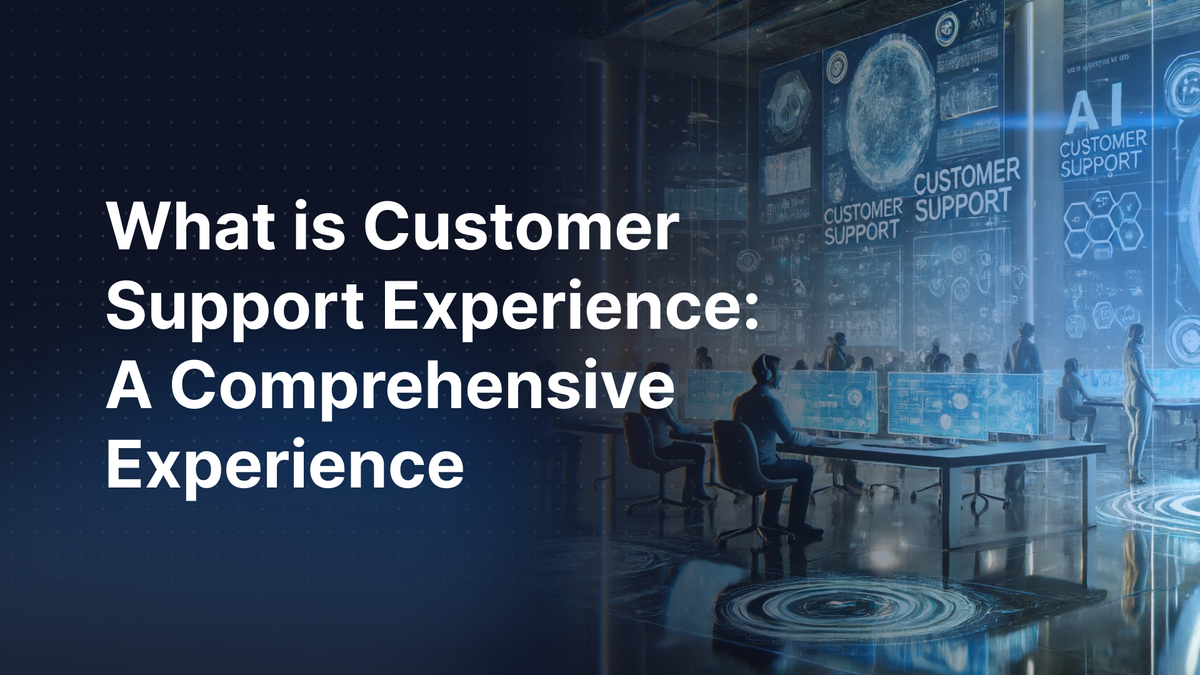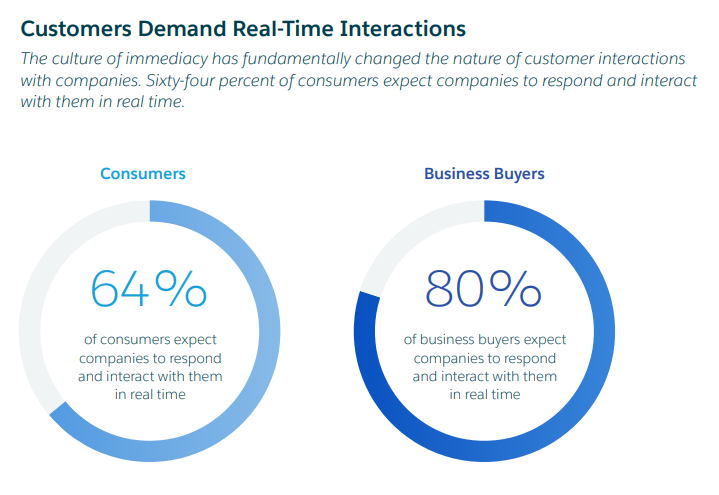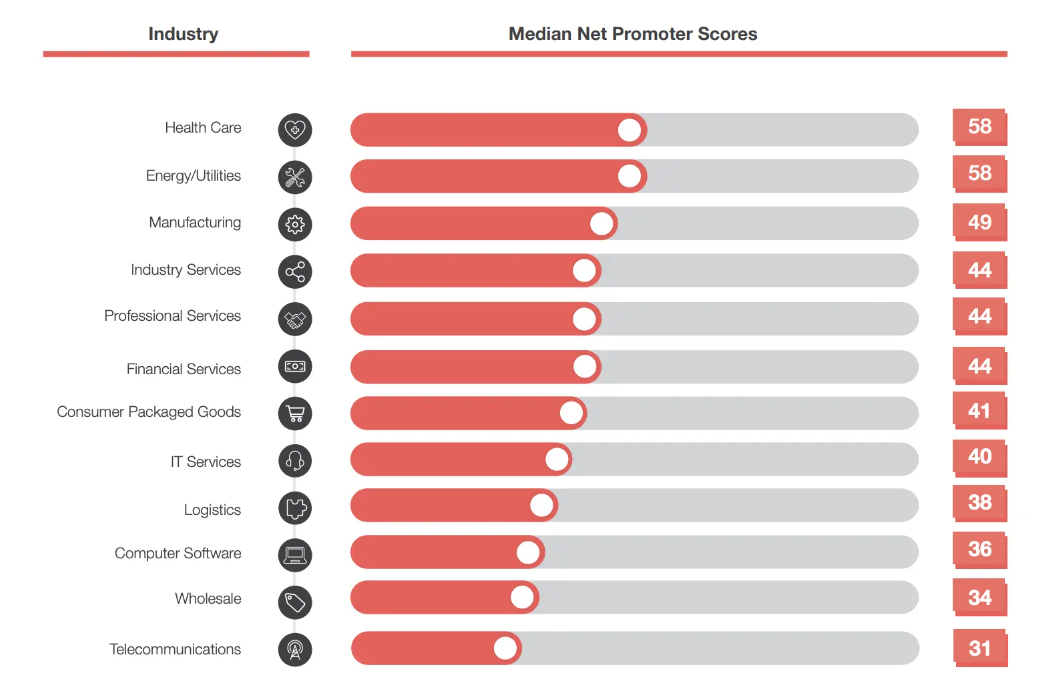Knowing how to utilize the customer support experience to harness your busine...

Customer support experience is a critical factor in determining a company's success. It encompasses every customer interaction with a company's support team, from initial contact to issue resolution. According to a recent study by Daniel Newman, 86% of customers are willing to pay more for a better customer experience, highlighting its importance.
A seamless and positive support experience can lead to higher customer satisfaction, loyalty, and retention. Therefore, it is essential for businesses to invest in effective support strategies. This guide will help you maintain a competitive edge in today's market by explaining customer support experience and its leverage.
Customer support experience encompasses every interaction a customer has with a company's support team, from initial contact to issue resolution. This experience plays a crucial role in shaping customer perceptions and loyalty.
Customer support experience includes the entire journey a customer goes through when seeking help, including:
A positive customer support experience can significantly impact a business. According to a Hyken report, 90% of customers would switch to another brand if the customer service experience is better over there. Furthermore, companies focusing on customer experience see an 80% increase in revenue.
To provide a stellar customer support experience, companies should focus on the following elements:
Ensure multiple channels (phone, email, chat, social media) are available for customers to reach support easily.
Quick response times are crucial; 76% of customers expect a reply within 24 hours on social media.
Customers appreciate when support agents fully understand their history and issues. 70% of customers expect anyone they interact with to have the full context of their interactions.
Providing a seamless experience across all channels is vital. Brands with a top omnichannel customer engagement strategy see a 9.5% yearly increase in revenue compared to those with poor strategies.
Investing in customer support experience leads to higher customer satisfaction and retention. Statistics show that 81% of customers will make repeat purchases if they have a good customer support experience. Additionally, businesses that prioritize customer experience report 60% higher profits than those that do not.
Good customer service experience covers a wide range of interactions between customers and companies. Understanding what counts as customer service experience can help businesses improve their support strategies and enhance customer satisfaction.
Before a purchase, customers often seek information and support to make informed decisions. Fundamental pre-purchase interactions include:
The purchase phase is critical in shaping customer perceptions. Key elements include:
After a purchase, practical support is crucial for maintaining customer satisfaction:
Ongoing engagement helps maintain a positive relationship with customers:
Offering self-service resources is a valuable aspect of the customer contact experience:

Personalized interactions significantly enhance the experience with customer service. Customers appreciate when support agents recognize their history and tailor responses accordingly. According to Accenture, 91% of consumers are more likely to shop with brands that recognize, remember, and provide relevant offers and recommendations.
Measuring customer support experience is essential for understanding how well your support team meets customer needs and expectations. By using various metrics, businesses can identify areas for improvement and ensure a consistently high level of customer service. Here are some key metrics and methods for measuring customer support experience:
The Customer Satisfaction Score (CSAT) is one of the most widely used metrics to gauge customer satisfaction with a specific interaction or overall support experience. Typically, customers are asked to rate their satisfaction on a scale from 1 to 5 or 1 to 7, with higher scores indicating greater satisfaction. Companies with high CSAT scores often have better customer loyalty and retention rates.
Net Promoter Score (NPS) measures customer loyalty by asking customers how likely they are to recommend your company to others on a scale of 0 to 10. Customers are categorized into promoters (9-10), passives (7-8), and detractors (0-6). The NPS is calculated by subtracting the percentage of detractors from the percentage of promoters.
Here are some median Net promoter scores from CustomerGauge that will help you assess the customer support experience. You can choose the benchmark related to your brand’s niche:

Customer Effort Score (CES) assesses how easy it is for customers to resolve their issues. Customers are asked to rate the ease of their experience on a scale from "very difficult" to "very easy." A lower effort score correlates with higher customer satisfaction. According to Gartner, reducing customer effort can significantly improve customer loyalty.
First Contact Resolution (FCR) measures the percentage of customer issues resolved on the first interaction without requiring follow-ups. High FCR rates are indicative of efficient and effective support processes. A report by the SQM group found that for every 1% improvement in FCR, there is a 1% improvement in customer satisfaction.
Time to Resolution (TTR) tracks the average time it takes to resolve a customer's issue from the moment it is reported. A shorter TTR indicates a more efficient support process. Research by Zendesk shows quicker resolution times correlate with higher customer satisfaction.
Collecting and analyzing customer feedback through surveys and direct comments helps identify strengths and areas for improvement in your support experience.cAll in all, engaging customers to gather detailed feedback can provide valuable insights into their expectations and experiences.
Despite the best efforts, businesses often face several challenges in providing a stellar customer support experience. According to a report by HubSpot, dealing with upset customers is the biggest challenge for a support agent.

This is just the tip of the iceberg! There are many more things that hinder customer service experience. Addressing these challenges effectively can lead to higher customer satisfaction and loyalty.
One of the customers' most frequent complaints is long wait times. According to a study by Forrester, 77% of customers say that valuing their time is the most important thing a company can do to provide good service. Long wait times can lead to frustration and a negative company perception. Implementing efficient call routing systems and employing enough staff during peak times can help mitigate this issue.
Another significant challenge is insufficient training for support agents. Well-trained agents are better equipped to handle customer inquiries efficiently and effectively. According to a report by Digitalcommons, customer satisfaction and feedback increase significantly when service agents are trained. Regular training programs focusing on both product knowledge and soft skills are essential.
Customers expect a seamless experience across all communication channels, whether it's phone, email, chat, or social media. A study by Aberdeen Group found that companies with robust omnichannel strategies retain 89% of their customers, compared to 33% for companies with weak strategies. Ensuring that all channels are integrated and providing consistent information can help deliver a unified customer experience.
Handling a high volume of support tickets and requests can be overwhelming for support teams. According to a Zendesk report, support ticket volumes increased by 30% in 2020. Using AI and automation to handle routine inquiries can free up human agents to focus on more complex issues.
Support agents often struggle with limited access to customer information, which hinders their ability to provide personalized service. Investing in a sound CRM system can help centralize customer information, making it readily available to agents.
Enhancing customer support experience is crucial for retaining customers and building loyalty. Here are several strategies that can help:
Gather feedback from customers through surveys, feedback forms, and direct comments. Regularly analyze this data to identify areas for improvement. Acting on feedback shows customers that their opinions are valued.
Use AI-powered chatbots to handle routine inquiries, freeing up human agents for complex issues. Automation tools can streamline workflows, reduce response times, and ensure customers receive prompt and efficient service.
Invest in comprehensive training programs for support staff. Focus on product knowledge and soft skills like communication and empathy. Empower agents to make decisions to resolve customer issues quickly, enhancing satisfaction.
Use CRM systems to maintain detailed customer profiles. PersonalizeBased on this data, personalize interactions. Personalized service makes customers feel valued and understood.
Quick response and resolution times are critical. Use efficient routing systems to direct inquiries to suitable agents. Consider extending support hours to cover peak times. Faster service meets customer expectations and reduces frustration.
Reach out to customers proactively to prevent issues. Provide updates on service issues, offer tips for product use, or check in to ensure satisfaction. Proactive support shows customers that you care about their experience.
Review and update support strategies regularly, incorporate new technologies and methods, and stay informed about industry trends. Continuous improvement ensures that your support evolves to meet changing customer expectations.
Technology plays a pivotal role in transforming and enhancing the customer support experience. By leveraging advanced tools and systems, businesses can provide more efficient, personalized, and seamless customer support.
AI and automation have revolutionized customer support by handling repetitive tasks and providing instant responses. According to a report by Tidio, over 63% of retail companies use AI to improve customer service, automating up to 70% of customer requests. This speeds up response times and allows human agents to focus on more complex issues. AI can quickly analyze large data volumes, reducing errors and improving decision-making processes.
AI-powered predictive analytics can anticipate customer needs and proactively address potential issues. For instance, AI algorithms can analyze customer behaviour to predict future needs and send timely reminders or offers. McKinsey reports that businesses using AI for customer engagement significantly improve customer satisfaction and operational efficiency.
Ensuring consistency across multiple channels is crucial. AI tools help integrate various communication platforms, allowing customers to switch seamlessly between channels without losing context. According to Tidio, 73% of customers expect to start on one communication channel and continue on another without restarting.
Implementing AI in customer support can lead to significant cost savings. According to Gartner, businesses that incorporate AI into their customer service strategies can achieve at least a 25% improvement in customer satisfaction, revenue, or cost reduction.
Leveraging technology in customer support makes the experience smoother, faster, and more personalized. AI and automation handle routine tasks efficiently, freeing human agents for more complex issues. AI customer service is your best bet for transforming the customer support experience! That's where Aidbase jumps in! These have cutting-edge AI solutions to make your customer service experience seamless and increase customer engagement.